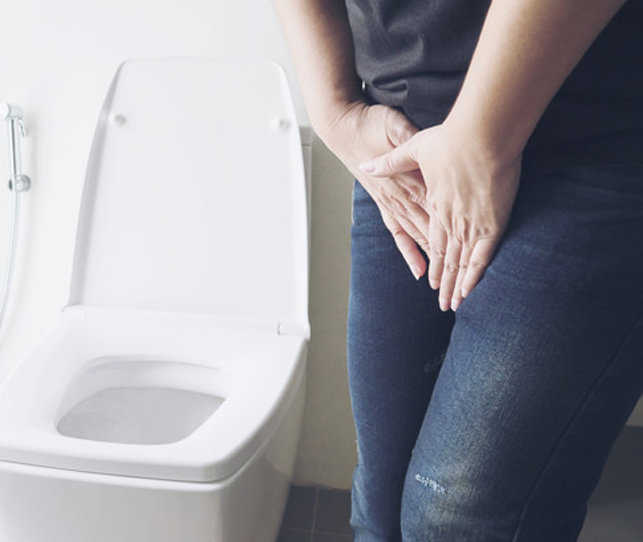Physical Therapy to Treat Pelvic Floor Health Conditions
in East Cobb, minutes from downtown Marietta, Sandy Springs, and Roswell
Have you been saying, “I need to find a physical therapist near me who has extensive knowledge and expertise in pelvic floor health and physical therapy in the East Cobb, Marietta, Sandy Springs, or Roswell area?” It is important to remember that not everyone who is a PT works with treating pelvic floor conditions.
Our physical therapy practice has extensive and specialized experience treating pelvic floor conditions and we are pelvic floor health experts. It takes considerable extra course work and clinical experience to treat the array of pelvic health conditions that warrant physical therapy and to provide excellent care for those conditions.
So when looking for a PT, make sure to ask questions about their experience with specifically treating pelvic floor dysfunction. We don’t use a one-size-fits-all approach, but rather a personalized approach that we know works, and is supported by research. Let’s get you feeling better! Contact us now to schedule an appointment or a free 15-minute phone call to see if our practice is a good fit for you.
What physical therapy treatments are involved with pelvic health?
Physical therapy treatments for pelvic health vary according to the issues present, but the following may be included in accordance with a treatment plan created together with the therapist and patient:
- Manual therapy: internal and/or external soft tissue release, trigger point release, visceral mobilization, myofascial release
- Breathing retraining
- Education on and retraining of bowel and bladder habits
- Pelvic floor muscle relaxation and/or strengthening
- Core strengthening
- Training in coordination of the pelvic floor muscles with other muscle groups
- Joint mobility in the spine, pelvis, and hips
- Assessment of other areas possibly contributing to pelvic issues
- Postural retraining
- General strengthening
- Pain management and pain science education

Physical Therapy for Pelvic Floor Dysfunction
Pelvic floor dysfunction is a common condition where you’re unable to correctly relax and coordinate the muscles in your pelvic floor. Some telltale signs or symptoms that may indicate you have pelvic floor dysfunction, such as:
- Feeling the need to urinate frequently
- Constipation and/or frequent straining during a bowel movement
- Painful urination
- Leaking stool or urine
- Feeling pain in your lower back and/or pelvic region
In women pelvic floor dysfunction symptoms can include the following:
- Painful sex (intercourse)
- Reproductive issues
- Pelvic organ prolapse
In men pelvic floor dysfunction symptoms can include the following:
- Erectile Dysfunction
- Male urinary incontinence
- Pelvic pain (or prostatitis)
Pelvic floor physical therapy can help patients with relieving the symptoms of pelvic floor dysfunction by working, stretching, and relaxing those muscles to help them work the way they should. You may be in the beginning of pelvic floor dysfunction or perhaps you have seen multiple providers and need an expert to help you truly resolve your symptoms. Read More…

Physical Therapy for Bladder Problems
Bladder issues and problems are so common that many people feel they are normal. However, bladder issues are not normal and can be treated successfully for most people using physical therapy instead of surgery or medications both of which can have side effects and complications.
Most commonly known as urinary incontinence, bladder control issues can include:
- Urinary urgency/frequency
- Urinary incontinence
- Pelvic Organ Prolapse
- Painful bladder syndrome
Physical therapy can help patients by relieving the symptoms of bladder problems by strengthening, stretching, and relaxing the muscles surrounding your bladder to help them work the way they should.

Physical Therapy for Bowel Problems
While some people are lucky enough to experience regular bowel movements and don’t experience bowel issues, many are not so lucky. Self-medicating with stool softeners, laxatives, or even chronic diarrhea, then you may be one of the many that suffer from bowel issues. Bowel issues may result from pregnancy/delivery or they may result from pelvic floor dysfunction, chronic inflammation which causes muscle pain and tightness, or lack of coordination in the muscle system.
Some common bladder issues can include the following:
- Constipation
- Rectocele
- Dyssynergic Defecation
- Ulcerative Colitis/Crohn’s Disease
Physical therapy can help patients by relieving the symptoms of bowel problems by strengthening, stretching, and relaxing the muscles surrounding your bowel to help them work the way they should.

Physical Therapy for Pelvic Pain
Pelvic pain is fairly common in both sexes, but in women, it is estimated that nearly 20% of women experience chronic pelvic pain. Pelvic pain occurs for a variety of reasons and is multifactorial so a thorough assessment of surrounding structures is necessary.
Common issues treated from pelvic pain include:
- Endometriosis
- Interstitial Cystitis
- Painful Bladder Syndrome
- Vaginismus
- vulvodynia
- Dermatologic conditions (Lichen Sclerosis/Planus etc)
Physical therapy can help patients by relieving the symptoms of pelvic pain by strengthening, stretching, and relaxing the muscles surrounding your pelvis area to help them work the way they should.

Physical Therapy for Sexual Dysfunction
According to the National Institutes of Health, many conditions of pelvic and sexual dysfunction can be addressed successfully through pelvic floor physical therapy (PFPT). In fact, like most pelvic floor conditions, because of its non-invasive nature, low incidence of side effects, and success rates, physical therapy is considered to be the first line of treatment for sexual dysfunction.
Patients may be uncomfortable discussing their sexual health with someone other than an OBGYN or Urologist, but Pelvic health physical therapists are professionals who are trained to discuss sexual health and treat the condition as they would any other that limits your mobility, causes pain, or negatively impacts your well being.
Sexual dysfunction conditions in men that may be treatable with physical therapy include:
- premature ejaculation
- pain after ejaculation
Sexual dysfunction conditions in women that may be treatable with physical therapy include:
- itching or burning of the vulva (the outer portion of the genitalia)
- pain in the clitoris
- pain in the vagina
Physical therapy can help patients with sexual dysfunctions by strengthening, stretching, and relaxing the muscles surrounding your pelvis area to help them work the way they should.

Pediatric Pelvic Floor Physical Therapy
Even children are susceptible to pelvic floor dysfunction and may require pediatric physical therapy to help them overcome their conditions. If your child suffers from the following conditions, the problem may not be behavioral, but rather a pelvic floor dysfunction:
- Leaking urine on undergarments
- Bedwetting
- Incontinence such as leaking urine when laughing, sneezing, etc.
- Infrequent urination or underactive bladder
- Constipation/diarrhea, painful bowel movements, over/underactive bowels
- Child is over 5 years old and still wears diapers or pull ups
While it is possible these are behavior modification issues, it is critical to have your child examined and evaluated by a qualified pediatric physical therapist such as Dr. Lisa Shaw who specializes in pelvis floor dysfunction. Your child is likely very unhappy with these conditions and is missing out of the joys of childhood. Treatment may be possible and family education is the key.
Pediatric physical therapy can help young patients with pelvic floor dysfunctions by strengthening, stretching, and relaxing the muscles surrounding in the pelvis area to help them work the way they should.

Physical Therapy For Pregnancy & Postpartum Pelvic Conditions
Physical therapy can help women during pregnancy and postpartum with pelvic conditions. Its non-invasive nature, low incidence of side effects, and high success rates make physical therapy the first line of treatment for these conditions.
Physical Therapy for Pregnancy
Physical therapy during pregnancy can ease the conditions, aches, and pains associated with the huge changes your body goes through. PT can also help prepare the body for labor and ease the delivery process, minimizing trauma to the pelvic floor and preventing some common postpartum issues. Physical therapy treatment for the pregnant woman may include:
- Education on the physical aspects of pregnancy, delivery, and postpartum recovery, and how to feel your best despite the physical changes
- Management of common areas of pain: low back, hips, sacroiliac joints, pubic bone, tailbone
- Management of bowel and bladder issues related to pregnancy
- Core strengthening and management of diastasis
Pelvic floor and perineal preparation for delivery - Support for fitness: women who are active before and during pregnancy have an easier labor and delivery and better return to function postpartum.
Physical therapy can help pregnancy and postpartum conditions by strengthening, stretching, and relaxing the muscles surrounding your pelvis area to help them work the way they should.
Physical Therapy for Postpartum
Physical therapy for postpartum moms is a crucial part of the healing process. In some countries, that is standard care. In the US, women are underserved. Every woman should have a PT assessment postpartum. Areas addressed may include:
- Pelvic floor muscle trauma – tearing, episiotomy, prolonged pushing, use of forceps or vacuum
- Diastasis recti – abdominal muscle separation
- Musculoskeletal pain – hips, back, tailbone, pubic symphysis separation, sacroiliac pain
- Pelvic Organ Prolapse – sensation of pressure or pain in the pelvic region or as though something is falling out
- Bladder & bowel issues
- Painful intercourse
- Cesarean birth scar management
- Posture and positioning during feeding and childcare
- Recommendation/plan for return to exercise
